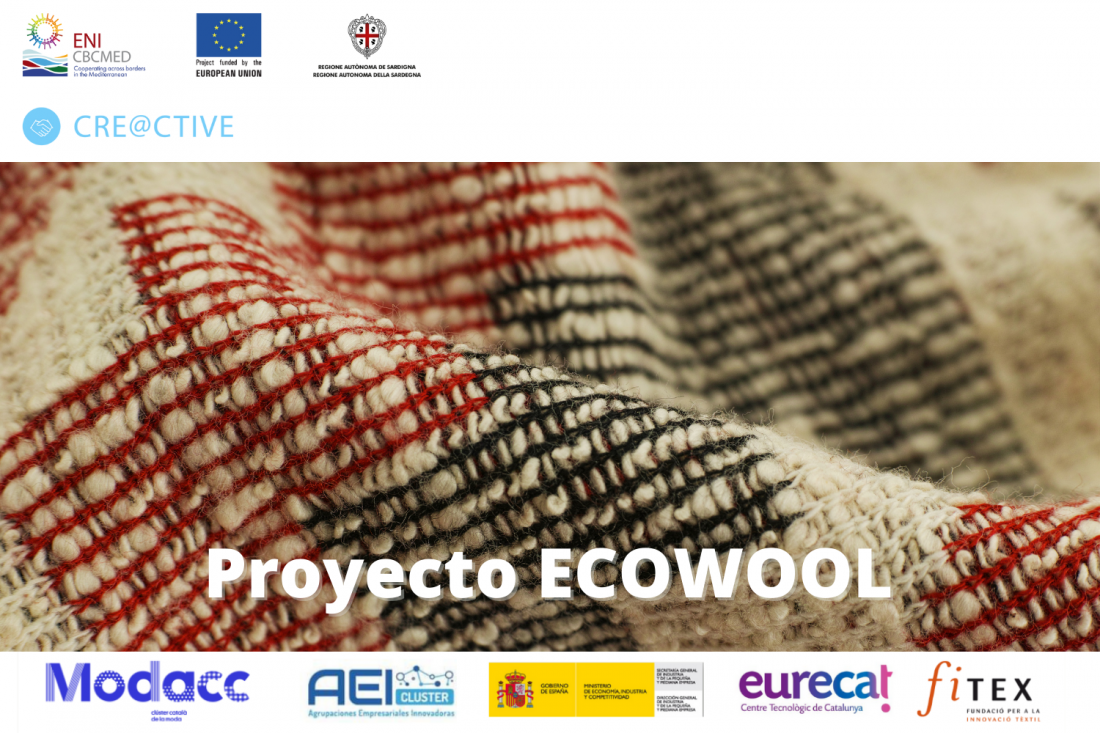CRE@CTIVE in Spain investigates on how to overcome conventional dyeing methods. Ever heard about natural fibre pretreatment?

Developing an Ecological textile process is becoming increasingly important given the need for developing a circular and sustainable economy, the use of natural resources, and the growing restrictions on the use of chemical compounds, dyes, or additives with adverse effects on the environment.
Currently, the textile and fashion industry generally use synthetic dyes that are low cost and facilitate the application with excellent fastness properties. However, synthetic colourants could cause medium to long term negative-environmental impacts and risks to human health. Customers are increasingly aware of health care and the environment and are therefore looking for textiles with sustainable or healthy labels.
That’s where the "ECOWOOL" project steps in. ECOWOOL is a project coordinated by our Spanish partner, Clúster Català de la Moda (MODACC), with the technical support of the EURECAT technology centre and the FITEX technology centre and has had the financial support of the Ministry of Economy, Industry, and Competitiveness through the project support program of Innovative Business Groups. The project investigated a more sustainable method of pretreatment of wool with low-temperature plasma or Chitosan biopolymer to overcome the challenges that came from natural dyeing processes.
But let us talk technical for a second. The textile surface affects properties like wetting, swelling, dye penetrability, and polymer adhesion (i.e. colour absorption and resilience, among other factors). Many conventional chemical treatments were developed to modify these properties, some of them associated with environmental problems. Therefore, it is necessary to identify new sources of natural dyes, optimize extraction methods and, above all, look for alternatives in dyeing procedures. And that is what the ECOWOOL project did by investigating a method to use natural wool fibres, plasma at low temperatures, and a biodegradable coating with natural polymers such as chitosan, which may create a breakthrough on an industrial level and develop new dyeing and textile finishing processes.
The research's main conclusion showed the technical feasibility of a dyeing process with natural colourants based on a low-temperature plasma pretreatment (LTP) and chitosan, facilitating the absorption and fixation of the colourants. Likewise, research has shown that the new process combining plasma and chitosan provides new resistance and anti-pilling properties to wool fabrics. Another interesting property of the new treatment is the increase in the dyeing speed and the final exhaustion on wool, which causes savings in dyes, water, and energy.
Finally, it was possible to analyze the feasibility of carrying out this innovative dyeing process on an industrial scale using plasma application systems in a continuous process adapted to the conventional application of colourants by industry.
As CRE@CTIVE, we have a responsibility to our environment to find innovation in all corners of the supply chain. We couldn't be more proud to have MODACC with us and help us cultivate those ideas in the Mediterranean region and support a stronger Euro-Mediterranean relationship in the traditional sectors.









